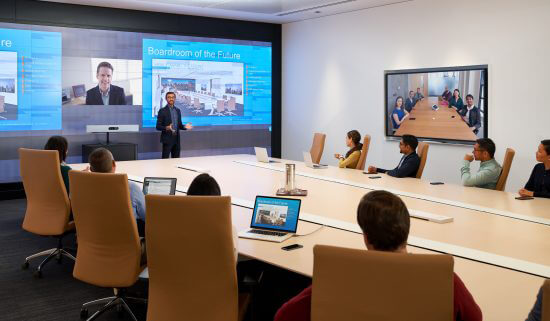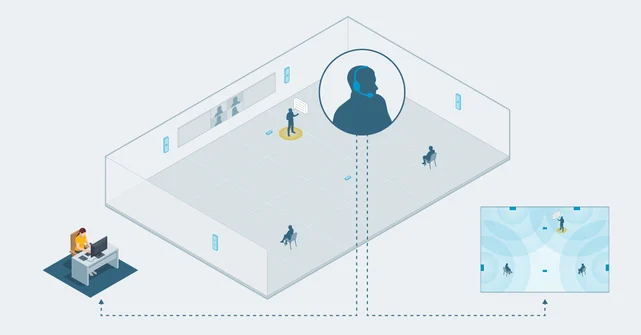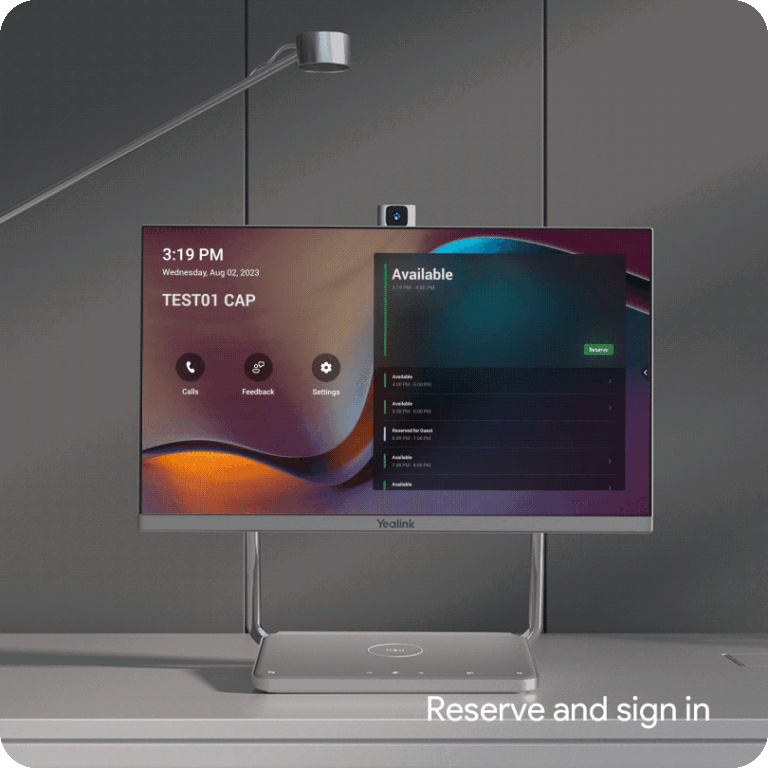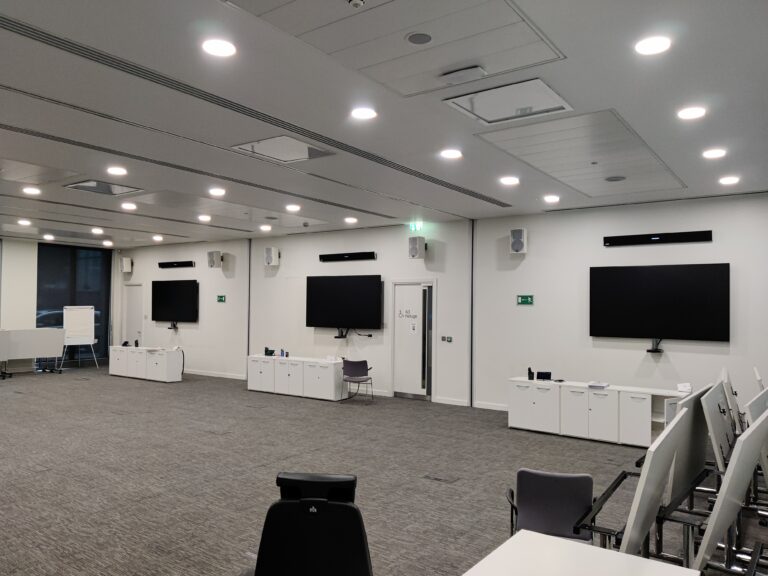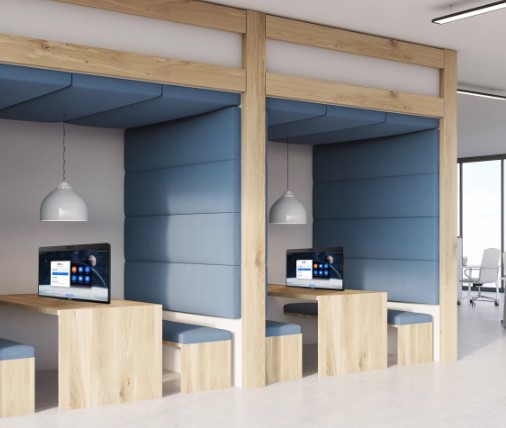Reposted from the Lifesize Blog. Click here to see the source post.
Organizations around the world have rolled out mandatory work-from-home policies for their entire workforce amid the spread of COVID-19. Not surprisingly, this sudden shift in where and how we work, collaborate and communicate has been challenging for many employees. Some are working from home for the first time. Which means figuring out how to stay focused and productive in a distracting new work environment. Even employees with past work-from-home experience are faced with new challenges in light of the coronavirus pandemic. With shelter-in-place orders and school closures. Millions of working parents are juggling taking care of their kids while also working alongside their spouses, partners or significant others.
Fortunately, there are ways to successfully work from home and avoid going stir-crazy during this time of uncertainty. From setting up a dedicated workspace to effectively communicating with your coworkers. This blog provides helpful tips for staying productive and delivering results while working from home.
12 Tips to Being Productive at Home
1. Create a home office or dedicated workspace
One way to keep your work and home lives separate is to create a dedicated workspace. Ideally, this space would be a permanent place for work in a separate room so that everyone in your household knows that if the door is closed, you’re working. If you do not have space for a home office. Try to find a quiet and semiprivate area to set up a dedicated workstation. This is especially important if you share a house or apartment with a roommate, spouse or kids.
2. Build a setup you love
Do you love dual monitors? Do you have a comfortable chair you can sit in for long periods? Do you work best in a space with natural sunlight? Set yourself up for success by creating a workspace that you love and that helps you be productive. If possible, try to mimic your in-office setup to help you stay focused and in the right work mindset. The Muse, a popular professional development and employment search company. Recently published a useful guide for designing a home office you’ll actually want to work in.
3. Set boundaries for people in your home
Set ground rules and boundaries for others who live in your home about what they can and cannot do while you work. This is especially important for working parents with children at home. You probably remember the video that went viral in 2017 of Robert Kelly’s children interrupting an interview he was doing with the BBC.
While a certain number of interruptions from children are inevitable. Providing clear guidelines on where they can play, times during the day you will be available to interact with them and specific periods of time you must not be disturbed will help you work with fewer distractions. Working parents may also find it helpful to create a simple red “stop” and green “go” sign system posted on their desk or office door to indicate if they are available or not.
4. Silence notifications
Research shows that the average smartphone user receives 46 notifications per day and checks their phone 58 times per day or more. Unless they’re directly related to work. You don’t need WhatsApp, iMessage, Facebook Messenger and other social media messaging platforms firing off while you’re working. During work hours, put your phone on silent or out of sight to focus solely on work.
5. Get into a consistent routine
One of the best ways to start working from home on the right foot and develop healthy work habits is to get into a routine and stick to it. Just like working in a traditional office, you should keep regular and consistent work hours. Set an alarm so you don’t oversleep, and decide what time you will start working every morning. When you will take lunch and when you will quit working for the day. It may be hard at first, but over time your daily work-from-home routine will become a habit and help you focus on work during the day.
Popular apps like Habit and Productive are also great tools for tracking goals and setting reminders until new habits become second nature.
6. Prioritize your work
What needs to be done ASAP? What can wait for tomorrow? Create a list of all the tasks you need to get done and then number the tasks in order of importance. The list will help you stay focused and committed to completing daily tasks. But make sure the list is realistic in what you can actually accomplish in a given day. Use the task list as a guide for creating your daily time blocks.
7. Use time blocking
Time blocking is a simple way of dividing your day into chunks of time for different types of tasks and activities. This is great for keeping a healthy work-life balance since you will have clearly defined start and end times to your workday. You can schedule times to exercise, take breaks, eat lunch and socialize to avoid getting overwhelmed with your workload. Time blocking is also great for time management and productivity during your workday.
Creating blocks of time to work on specific tasks like replying to emails, prepping and attending meetings and working on projects will help you stay focused on effectively completing tasks. By being aware of how you spend your workday. You can continuously fine-tune your time blocks to find more efficient ways of completing your daily tasks.
8. Take breaks
It’s important to take breaks during the day for your mental health. Rather than sitting at your desk and watching YouTube videos or scrolling through social media feeds. Leave your workspace and spend time with your family, read something unrelated to work or go for a walk outside. You may also find it beneficial to take a dedicated 30-minute or full-hour lunch break to help you recharge in the middle of the day.
9. Have virtual water cooler chats
A 2018 survey showed that 20% of remote workers feel that loneliness is their biggest struggle with working remotely. Many traditional in-office workers are used to having casual “water cooler” conversations with their colleagues about non-work-related topics. This allows employees to establish personal connections and take a break from daily work pressures. This may seem counterproductive, but a study of Bank of America employees showed that the most productive workers belonged to close-knit teams and frequently spoke with their coworkers.
You can create private channels in chat tools like Slack and Microsoft Teams to have casual, non-work-related conversations with coworkers. Alternatively, to add more of a human element to the conversation, connect with members of your team in a virtual break room using Lifesize. The face-to-face interaction can add a quick dose of levity and laughter to your day.
10. Learn to say no
Research shows that the more difficulty that you have saying no, the more likely you are to experience stress, burnout and even depression. Learning to say no when you have too much on your plate is a powerful way of protecting yourself from being overwhelmed. This applies to both your work life and your personal life. Committing to too many tasks at one time can hinder the quality of your work and productivity.
If you are certain you cannot take on the additional workload, be direct and clear with the person requesting your help and ask your manager for clarity regarding priorities. Remember, saying no to a new commitment gives you the opportunity to fulfill current projects successfully and will help you avoid setting a false expectation with colleagues concerning how much you can do at once.
11. Pick a definitive stop time each day
You might assume that working from home gives you a better work-life balance, but nearly one-third of remote workers say they struggle to achieve a good balance. Without a definitive time to stop working every evening, it’s easy to blur the lines between your home life and work life. Part of being productive while working from home is not feeling stressed, so set a time every day to close your laptop and walk away from work. You can even set an alarm to go off at a specific time that reminds you it’s time to start saving your work and disconnect until the next workday.
12. Go outside
Finally, make time to go outside and get fresh air and sunlight regularly. It’s easy to feel trapped and stressed when working inside all day. Take a walk, ride a bike, work out or do anything to get your blood pumping. Invite others in your household to join you. Studies show that going outside can improve your memory, help fight depression and lower your blood pressure.
Don’t Forget the Tools That Will Help You Succeed
Reliable internet
Without reliable internet, it’s difficult to work from home effectively. Ensure that you have enough bandwidth to join video calls and stay connected during the workday. Take into account how many devices will access the internet at the same time. Do you have kids connected to the WiFi? Is your smart TV streaming video? Are others in your household also using the internet while working from home? If your connection is not robust, set ground rules about when others in your household can be online or stagger your video meetings with other workers in your household if possible.
Quality video conferencing
Cloud-based video conferencing is especially useful for employees working from home since you can easily connect to a video call from any smart device or laptop. The face-to-face interaction adds a human element to the conversation and lets you connect on a deeper level with your clients, partners and coworkers.
In response to the coronavirus pandemic, Lifesize is offering free, unlimited video conferencing service to all global businesses for six months. Our goal is to support businesses and employees as best we can during this difficult time and keep the world working.
Text-based chat tools
Instant messaging apps like Microsoft Teams and Slack are great for quick, impromptu, text-based conversations to help you stay connected to your team throughout the workday. In addition to texts, you can also send GIFs and videos on the platforms, making the messages more engaging. All files and chats are synced, archived and searchable so that you can find chats and documents in the future across all of your devices. You can also create unique channels so smaller groups of coworkers or departments can work together on specific tasks and projects.
Project management tools
Project management tools like Asana, Trello and Monday.com are designed to help you stay organized and on track. These tools are especially useful for collaborating on projects that have a lot of moving parts and make it easy to see when tasks are due, who is assigned to each task and the overall progress to ensure that every project is completed correctly and on time.
Conclusion
It’s easy to mix your work life with your personal life when working from home. To overcome this, try to get into a regular work routine just like you were going into the office every day. Set clear start and stop times as well as breaks throughout the day. If possible, set up a dedicated workstation that mirrors the one you have in the office. All of these steps will help get you into a working mindset and keep you focused throughout the day. To avoid feeling lonely and disconnected from your team, especially during this time of uncertainty, use chat apps and face-to-face video conferencing throughout the day to have casual and impromptu conversations with your coworkers.

